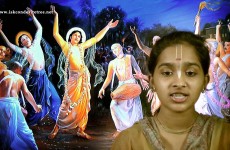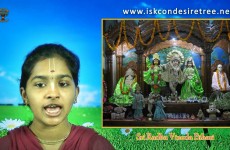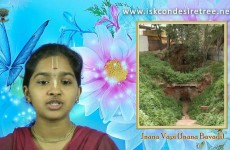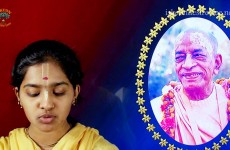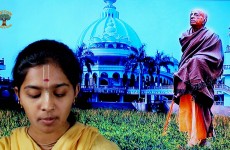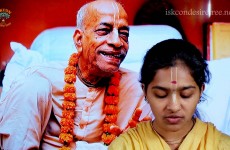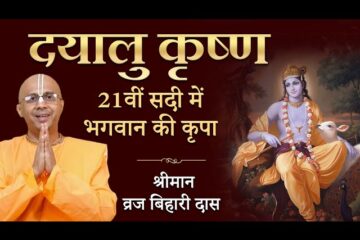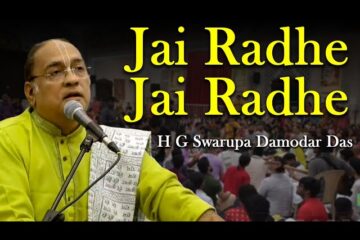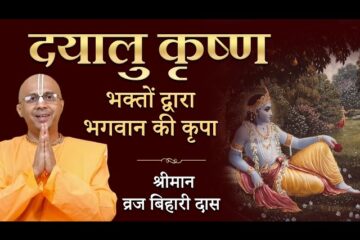There are four bonafide vaishanava sampradayas – all starting from Vishnu or Krishna. These are Brahma Sampradaya, Laxmi Sampradaya, Siva Sampradaya & Kumar Sampradaya
The focus of Gaudiya Vaishnavism is the devotional worship (bhakti yoga) of Radha and Krishna, and their many divine incarnations as the supreme forms of God – Svayam Bhagavan. Most popularly, this worship takes the form of chanting or singing Radha and Krishna’s holy names, such as “Hare”, “Krishna” and “Rama”, most commonly in the form of the Hare Krishna mahamantra. The movement is also referred to as the Brahma-Madhva-Gaudiya sampradaya, referring to its traditional origins in the succession of spiritual masters (gurus) originating from Lord Brahma. It classifies itself as a monotheistic tradition, seeing the many forms of Vishnu as expansions or incarnations of the one Supreme God (adipurusha) – Krishna. Although sharing a common set of core beliefs, there are some philosophical differences which distinguish Gaudiya Vaishnavism from other Vaishnava schools. The primary difference is that Lord Krishna is seen as the original form of God, not as an avatar of Vishnu. Over the three centuries following the disappearnace of Sri Chaitanya Mahaprabhu, the Gaudiya Vaishnava tradition evolved into the form in which we largely find it today in contemporary India. In the early years of the tradition, the followers of Nityananda Prabhu, Advaita Acharya and other companions of Chaitanya Mahaprabhu educated and initiated people, each in their own locales across Bengal.
Chaitanya Mahaprabhu requested a select few among his followers, who later came to be known as the Six Gosvamis of Vrindavan, to systematically present the eternal theology of bhakti in their writings. This theology emphasized the devotee’s relationship to the Divine Couple, Radha and Krishna. The six were Rupa Goswami, Sanatana Goswami, Gopala Bhatta Goswami, Raghunatha Bhatta Goswami, Raghunatha dasa Goswami and Jiva Goswami. In the second generation of the tradition, Narottama, Srinivasa and Shyamananda, three students of Jiva Goswami, the youngest among the six Goswamis, were instrumental in spreading the theology across Bengal and Orissa.
By disciplic succession it is meant a line of spiritual teachers that has transmitted the transcendental knowledge until the present day in an unaltered form starting from Lord Krishna.
A spiritual master must be in an authorized disciplic succession to be bonafide. It is not possible for someone to be a bonafide spiritual master in a line of spiritual authority that does not come from Krishna.
The principle is that Vaishnava teachings should be passed on, unchanged, from guru to disciple.
In sanskrit., disciplic succession is also called “Parampara”.
We can understand how perfect knowledge can be received from Lord Krishna himself. In the Bhagavad Gita, particularly in Chapter 4 Text 2 Lord Krishna mentions:
evam parampara-praptam
imam rajarsayo viduh
This supreme science was thus received through the chain of disciplic succession, and the saintly kings understood it in that way.
Spiritual knowledge descends through the disciplic succession from Krishna. The representatives of the disciplic succession carry the pure message of Krishna without changing anything. The transcendental knowledge (divya jnana) is like a river flowing from one acarya to the next. It’s source is Krishna who directs it to a qualified disciple who realizes, preserves and directs it to his qualified disciple who again realizes, preserves and directs it to his successor and so on until it arrives here.
See more – http://gaudiyahistory.com













